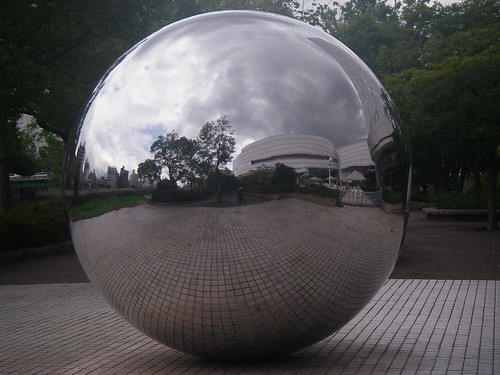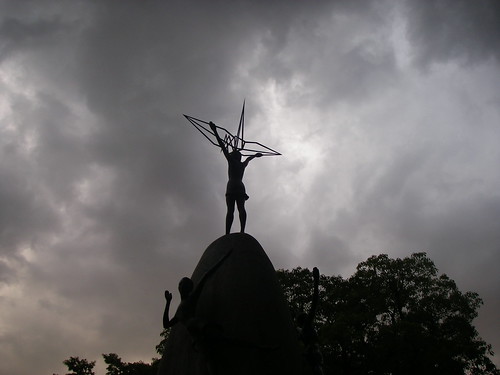Hiroshima: Arrival
06/09/2007
If I didn’t get lost on arrival, this is because it is nearly impossible. The tourist information (one of several) is right in front of the Shinkansen exit.
Of course I promptly walked off in the wrong direction to the main exit, but the station map I had been issued with soon set me straight (I tried to hide behind the pillars as much as possible while doubling back, but in any case the ladies at the counter pretended not to notice).

Being mollycoddled can bring its own problems, because the apparent impossibility of getting lost adds pressure not to do so. It’s also hard to look nonchalant with a bundle of maps in your hand. The ladies at the counter had issued me with no fewer than six or seven of them—all in English—with the International Youth House (where they had found me a cheap room), buses, trams and main roads all clearly circled. In addition to the station map I had a map of the transport system, a city map, a walking tour map, a map or two of the surrounding area, another map of the street car system and a special map for the 62nd Anniversary Memorial weekend a month ago.
And I still managed to get lost. Twice.
Like a child out alone for the first time, I couldn’t figure out how to pay for my bus ride. I was getting flustered as people waved me on to the back entrance and pointed at a machine next to the door: there was no coin slot, but there was a slip with a number on it, so I palmed it and spent the next five minutes figuring out the obvious: the number was the zone where I’d boarded and the fares were shown on a screen up in front. You drop the money into a box next to the driver when you leave.
By the time I had figured that out, I had lost my position on the map, but I reckoned that it was a bad idea to cross the bridge ahead as that would take me too far. So I got off.
That was the second time I got lost.
By now I was sweating, not just because it was about 35°C, but because the lady at the tourist information had phoned ahead, saying I’d be half an hour and imprinted on me that I should go directly to the International Youth House as they were waiting for my payment, and it is very bad form not to show up. “Please make sure you phone if you want to cancel!”
Consequently, I expected the receptionist to be fidgeting, while a huddle of travellers were mobbing the desk, clamouring for a room. Just like in Kyoto.
All this was making me nervous.
And what would the place be like? ‘International Youth House’ sounded suspicious. I shuddered at the thought of the communal bath with the switched signs.
Be grateful you don’t have to camp.
I walked fast, furious at my own stupidity. How did I ever get around South East Asia like this? I didn’t get this worked up on that trip until after 8 weeks of travel, so why couldn’t I the heck calm down now.
The next road was the right one. I arrived at the Aster Plaza Hiroshima International Youth House five minutes later, sweaty and red in my face. If it hadn’t been circled and marked with an ‘x’ on the map, I would have walked straight past it: the place was huge and looked—posh
This couldn’t be right.
Hesitantly, I pushed open the gleaming glass doors. In a corner of the marble foyer was a long desk manned by three immaculately preened receptionists.
I pushed my reservation slip across the polished wood, expecting them to break out in fits of giggles. But one of them smiled, requested my passport and issued me with a key in return.
The ‘Youth House’ was a four-star hotel. My room had en-suite facilities, a TV, kettle, toiletries, fluffy towels etc. And the floor I stayed on had a cigarette machine and a beer vending machine.
Meanwhile, outside, the clouds were drawing in. I stared hypnotized at the TV screen which showed the eye of a hurricane homing in on Tokyo.
Rain started slashing against the windows.
